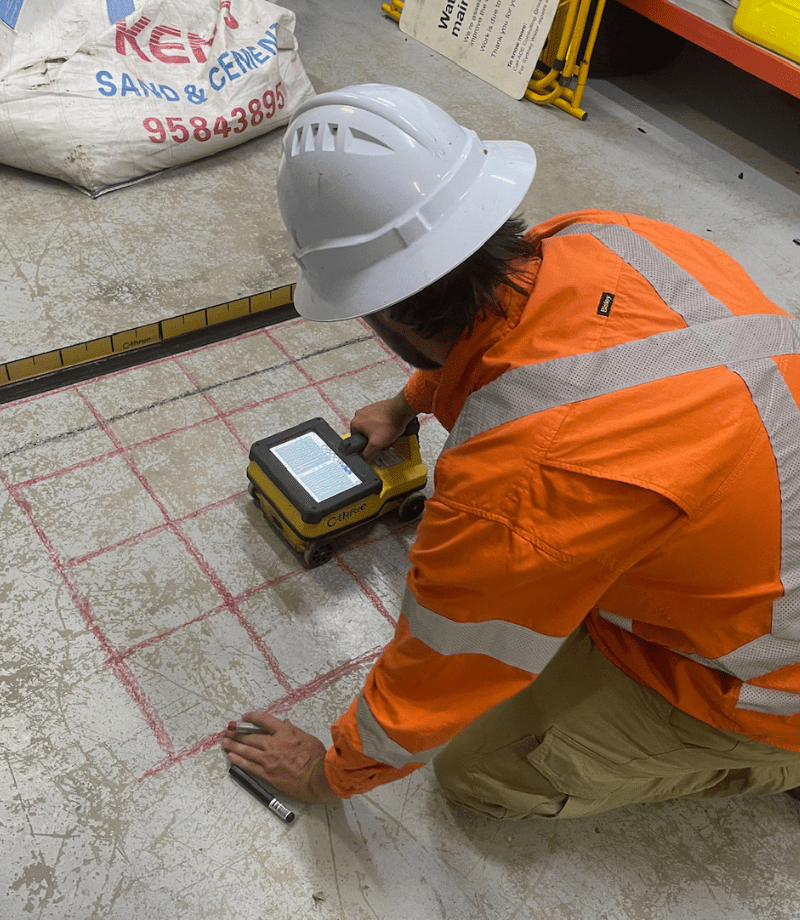RainierGPR Service Areas: Comprehensive Protection for Concrete Scanning
RainierGPR Service Areas: Comprehensive Protection for Concrete Scanning
Blog Article
Enhancing Project Preparation and Execution Through Advanced Concrete Scanning Methods
In the world of project planning and foresight, accuracy and execution are essential aspects that can make the distinction between success and troubles. Advanced concrete scanning techniques have emerged as an advanced tool established to boost the standards of task monitoring within the building and construction industry.
Benefits of Advanced Concrete Scanning Techniques

Improved Precision in Task Assessments
Enhancing task evaluations via sophisticated concrete scanning methods considerably boosts the accuracy and integrity of construction evaluations. By employing cutting-edge scanning technologies such as ground-penetrating radar (GPR) and 3D imaging, task teams can now get thorough understandings into the condition of concrete structures, identifying prospective flaws or weak points that might not be visible to the nude eye. This improved level of precision in task assessments makes it possible for building and construction experts to make more enlightened decisions pertaining to repair and maintenance approaches, causing boosted total project results.
Furthermore, the increased precision in project analyses achieved with innovative concrete scanning methods assists in decreasing the threat of unpredicted problems during the building stage. By proactively detecting concealed abnormalities within concrete frameworks, such as rebar rust or gaps, job groups can resolve these concerns beforehand, preventing pricey delays and revamp later on in the project lifecycle. Eventually, the improved accuracy in project assessments assisted in by sophisticated concrete scanning techniques adds to greater efficiency, cost-effectiveness, and quality in construction projects.
Very Early Identification of Structural Obstacles
Early discovery of architectural obstacles plays an essential duty in making certain the honesty and safety of concrete structures throughout the building and construction procedure. Identifying possible issues at a very early phase permits visit their website prompt treatment, protecting against expensive rework, routine delays, and security dangers. Advanced concrete scanning techniques, such as ground-penetrating radar (GPR) and 3D imaging, make it possible for task groups to uncover hidden issues, spaces, reinforcement layout inconsistencies, and various other anomalies that could endanger the framework's stability.
By implementing these techniques throughout the preparation and execution phases, building experts can proactively attend to architectural obstacles prior to they escalate into major problems. For instance, spotting poor concrete cover over like this reinforcement bars early can avoid corrosion and architectural weakening over time - RainierGPR Service Areas. In addition, recognizing variants in concrete thickness or thickness can help optimize material usage and make sure uniform strength residential or commercial properties across the framework
Eventually, very early recognition of architectural obstacles through advanced concrete scanning not only boosts the general quality and toughness of the building and construction but additionally contributes to a more secure constructed environment for owners and individuals.
Enhanced Precaution in Building And Construction
The execution of robust security protocols is essential in the building industry to alleviate dangers and guard the well-being of stakeholders and employees. Building and construction sites are naturally unsafe atmospheres, with possible dangers varying from falls and tools breakdowns to architectural failings. To improve precaution, building companies are increasingly taking on technological advancements such as wearable devices that keep an eye on employees' important indicators and discover possible wellness issues in real-time. Furthermore, the use of drones for site security enables routine security inspections without putting employees in harm's means. Security training programs have actually additionally developed to include virtual fact simulations that give hands-on experience in taking care of emergency situations. Additionally, the combination of expert system in safety and security administration systems enables proactive identification of prospective risks, permitting timely interventions. By focusing on security via the unification of innovative modern technologies and thorough training programs, building and construction jobs can substantially minimize mishaps and create a protected functioning atmosphere for all involved - RainierGPR Service Areas.
Streamlining Project Monitoring Processes
To optimize operational effectiveness and make sure job success in the construction market, a focus on improving task monitoring procedures is necessary. By carrying out effective project administration procedures, building and construction tasks can lessen delays, lower prices, and boost total efficiency.

Final Thought
Finally, the application of advanced concrete scanning techniques supplies various advantages for task preparation and implementation. These strategies give investigate this site improved accuracy in project assessments, very early identification of structural obstacles, enhanced precaution in construction, and streamlined task monitoring processes. Including these methods right into project workflows can ultimately lead to more successful and effective results in building projects.
Inevitably, the improved accuracy in task assessments promoted by sophisticated concrete scanning strategies adds to greater performance, cost-effectiveness, and quality in building and construction tasks. RainierGPR Service Areas.
To enhance operational performance and ensure task success in the building and construction sector, a focus on improving job monitoring processes is important. By implementing effective task management processes, construction jobs can lessen hold-ups, reduce prices, and improve general performance. By simplifying project management processes through technology integration, clear communication, and data-driven strategies, building and construction jobs can attain better efficiency, cost-effectiveness, and effective outcomes.
These methods supply enhanced accuracy in job evaluations, very early recognition of architectural obstacles, improved safety procedures in construction, and structured task monitoring procedures.
Report this page